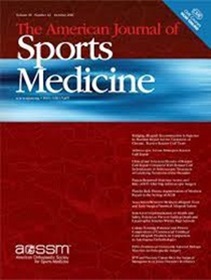潜在的短期和长期的缺血预处理的生理效应作为一种促人体健康的援助:重新审视基本机制和应用。
IF 9.3
1区 医学
Q1 SPORT SCIENCES
引用次数: 0
摘要
缺血预处理(IPC)已成为一种有希望的干预措施,可改善健康和运动相关的结果。早在20世纪80年代和90年代,IPC就因其在临床和动物研究中的心脏保护作用而得到认可,此后IPC因其潜在的人体益处而受到关注。尽管越来越多的人对其感兴趣,但潜在的生理机制仍然知之甚少,导致研究探索因果关系并评估IPC在不同运动模式下的功效,结果往往好坏参半。这篇主要文章旨在阐明IPC可能提高运动成绩和促进愈合效果的机制。具体来说,这篇主要文章讨论了IPC的即时(短期)和持续(长期)影响。短期效果主要包括血管功能和运动能力的急性改善,而长期效果可能包括增强恢复、减轻运动引起的肌肉损伤和适应性生理反应等累积益处。本文强调了通过延长IPC应用和测试之间的时间窗口来优化实验方案的重要性,以最大化性能结果,特别是在与肌肉损伤相关的条件下。未来的研究应优先探索IPC对运动表现和恢复的长期影响,以更好地了解其作为可靠的人体健康辅助药物的潜力。本文章由计算机程序翻译,如有差异,请以英文原文为准。
Potential Short- and Long-Term Physiological Effects of Ischemic Preconditioning as an Ergogenic Aid: Revisiting Foundational Mechanisms and Applications.
Ischemic preconditioning (IPC) has emerged as a promising intervention for enhancing health- and exercise-related outcomes. Initially recognized in the 1980s and 1990s for its cardioprotective effects in clinical and animal studies, IPC has since garnered attention for its potential ergogenic benefits. Despite growing interest, the underlying physiological mechanisms remain poorly understood, leading to research exploring cause-effect relationship and evaluating IPC efficacy across diverse exercise models, often yielding mixed results. This Leading Article aims to clarify proposed mechanisms by which IPC may enhance athletic performance and facilitate healing effects. Specifically, this Leading Article discusses both the immediate (short-term) and sustained (long-term) effects of IPC. Short-term effects primarily involve acute improvements in vascular function and exercise capacity, while long-term effects may include cumulative benefits such as enhanced recovery, mitigation of exercise-induced muscle damage and adaptative physiological responses. This article highlights the importance of optimizing experimental protocols by extending the time window between IPC application and testing, to maximize performance outcomes, particularly under conditions associated with muscle damage. Future research should prioritize exploring the long-term effects of IPC on performance and recovery to better understand its potential as a reliable ergogenic aid.
求助全文
通过发布文献求助,成功后即可免费获取论文全文。
去求助
来源期刊

Sports Medicine
医学-运动科学
CiteScore
18.40
自引率
5.10%
发文量
165
审稿时长
6-12 weeks
期刊介绍:
Sports Medicine focuses on providing definitive and comprehensive review articles that interpret and evaluate current literature, aiming to offer insights into research findings in the sports medicine and exercise field. The journal covers major topics such as sports medicine and sports science, medical syndromes associated with sport and exercise, clinical medicine's role in injury prevention and treatment, exercise for rehabilitation and health, and the application of physiological and biomechanical principles to specific sports.
Types of Articles:
Review Articles: Definitive and comprehensive reviews that interpret and evaluate current literature to provide rationale for and application of research findings.
Leading/Current Opinion Articles: Overviews of contentious or emerging issues in the field.
Original Research Articles: High-quality research articles.
Enhanced Features: Additional features like slide sets, videos, and animations aimed at increasing the visibility, readership, and educational value of the journal's content.
Plain Language Summaries: Summaries accompanying articles to assist readers in understanding important medical advances.
Peer Review Process:
All manuscripts undergo peer review by international experts to ensure quality and rigor. The journal also welcomes Letters to the Editor, which will be considered for publication.
 求助内容:
求助内容: 应助结果提醒方式:
应助结果提醒方式:


